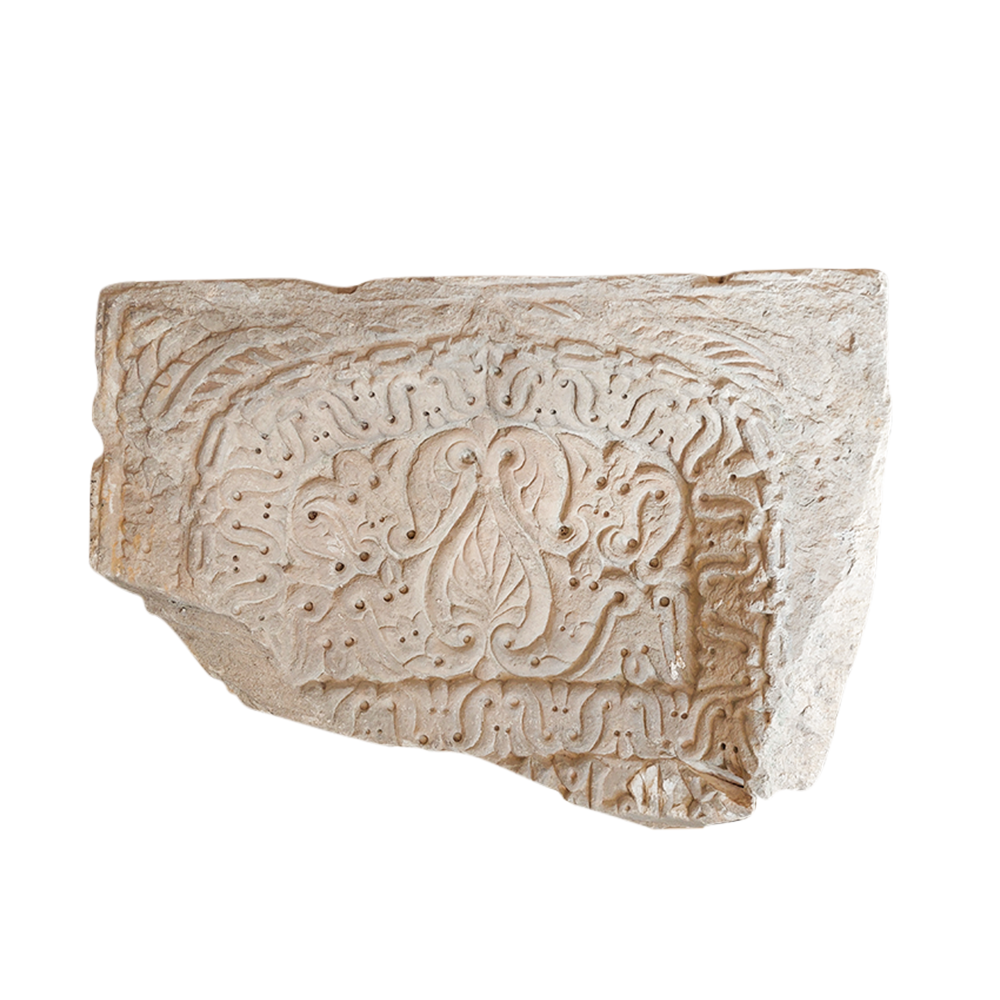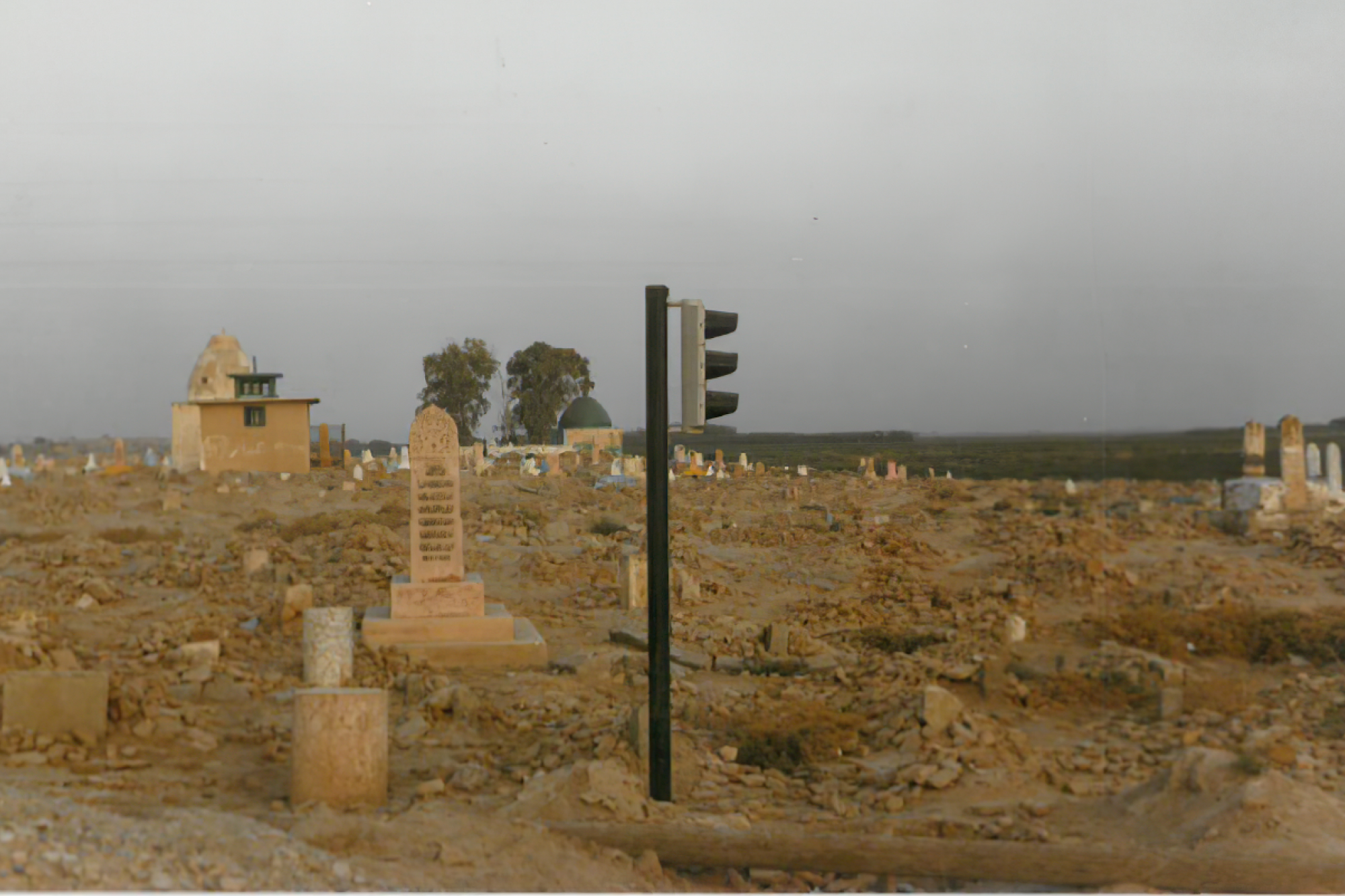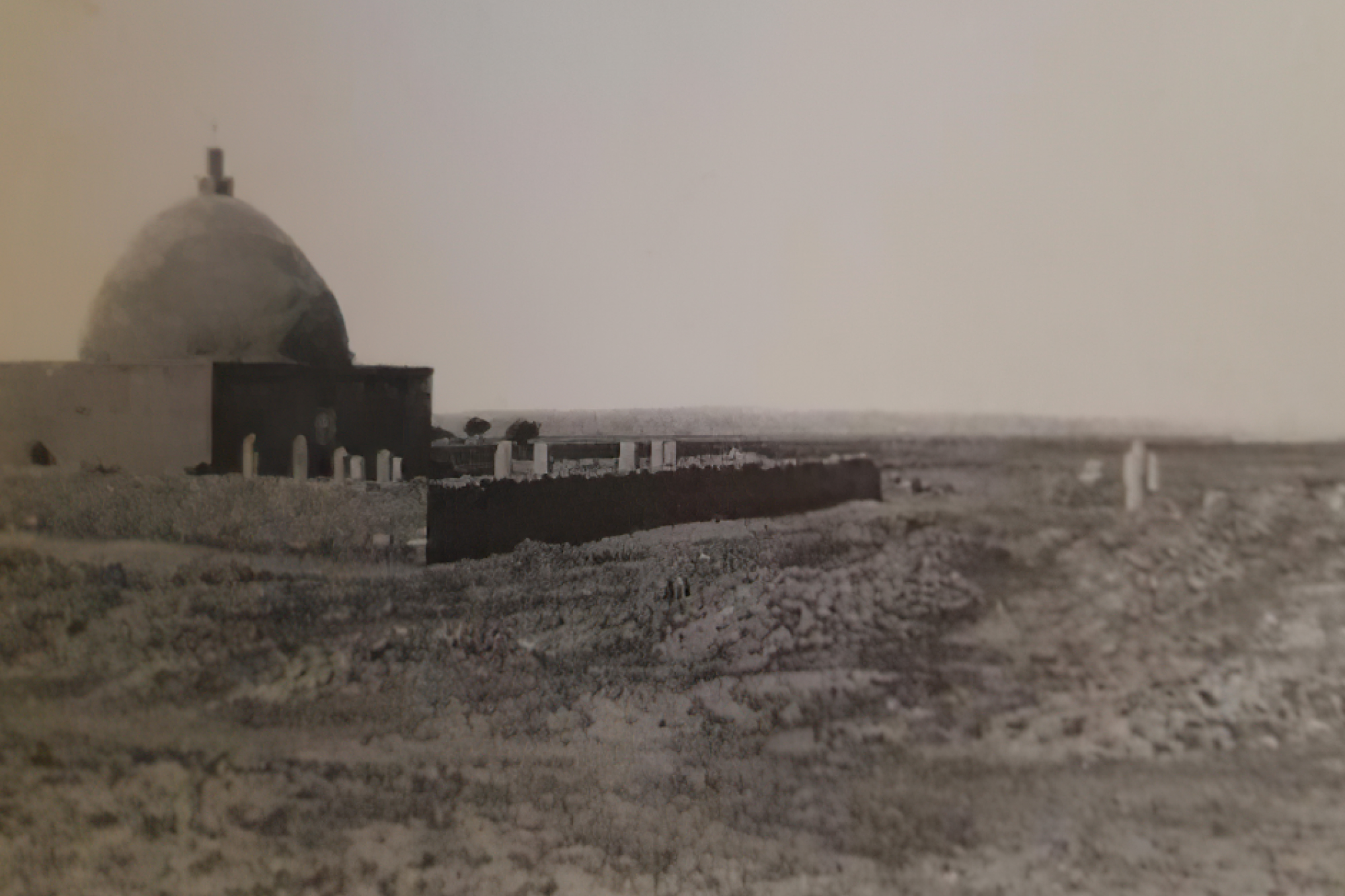
MiÎrab from the Mausoleum of Uwais
About the exhibition
This upper section of a prayer niche is a unique to the highly developed Syrian art of the late 8th and early 9th centuries. It also reflects the subtle adaptation of Byzantine Christian objects into Islamic culture, even in religious contexts.
Originally, this piece served as the lid of a Byzantine sarcophagus, as evidenced by its outer form. It features a triangular profile and is shaped like a roof decorated with rows of slightly pointed tiles. An acroterion, a typical classical ornament, once crowned the apex, though much of it is now missing.
For unknown reasons, the sarcophagus lid was no longer used and the precious marble was reworked as an Islamic prayer niche. Surrounded by several decorative bands, a broad border of undulating tendrils frames the central area, which showcases a large palmette surrounded by leaves.
The ornamental style with the vegetal motifs closely resembles the stucco decorations in the Abbasid palaces in Raqqa and, shortly after, in Samarra (Iraq).
The MiÎrāb was installed in the old mausoleum of Uwais al-Qaranī. According to an inscription, the small building was restored in 1864-65. In 1987 the mausoleum was removed and the adjacent cemetery was relocated to the its current site.

Cemetery at the Mausoleum with traffic light, ca. 1985

Mausoleum of Uwais, beginning 20th century, photo Max von Oppenheim